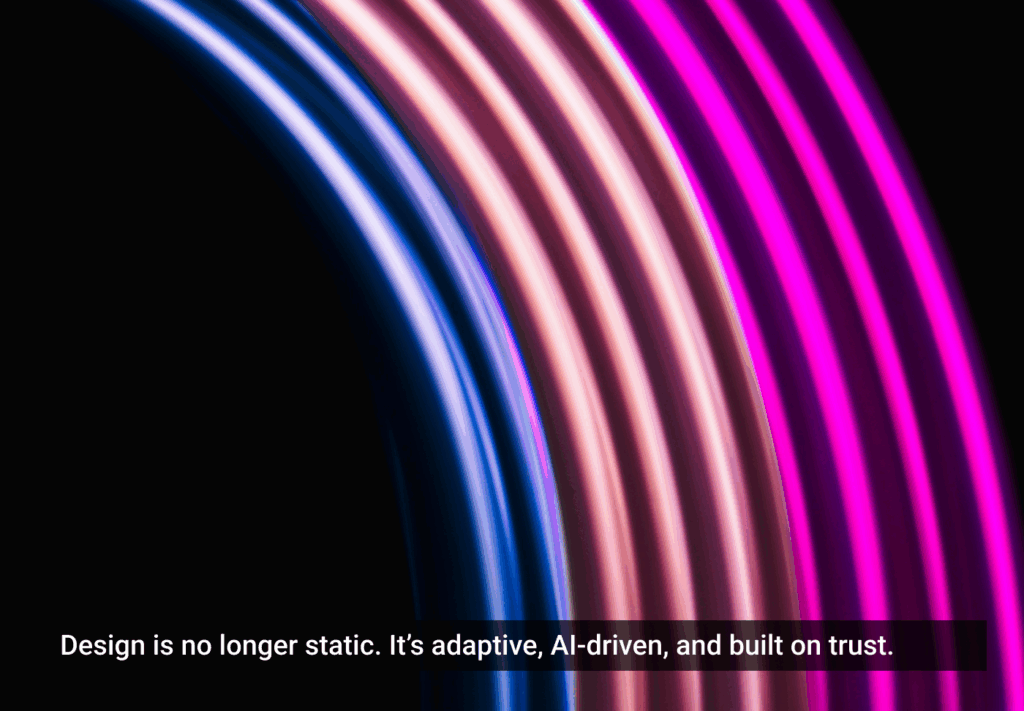- Artificial Intelligence, Design Leadership, Future of Design, Future of Work, Product Management
Uncover the AI-driven future of product management, where execution is automated and staying close to the market is key.
- The article explores how AI tools such as Startup.ai and Ideanote are turning ideas into products, minimizing the need for traditional project management jobs.
- It stresses that success in product management today depends on staying close to present market signals rather than coordinating or interpreting concepts.
- The piece highlights that the future belongs to quick thinkers: AI prioritizes ideas over resumes, leveling the playing field for innovators everywhere.
Share this link
- December 4, 2025

- AI in UX, Artificial Intelligence, Future of Design, Human-Centered Design, Interaction Design, Product Design, UX Design
Explore the future of design: AI-powered interfaces that adapt, stay human-focused, and build trust.
- The article discusses the shift from fixed interfaces to real-time experiences, switching the role of designers from creating screens to guiding how systems operate.
- The piece also stresses that, as experiences become personalized, they must maintain user trust, privacy, and authentic human connection.
Share this link
- December 2, 2025

- AI in UX, Artificial Intelligence, Design Research, Human-Centered Design, UX Research
Explore how design researchers can earn the trust and buy-in that give studies impact, even as AI shifts how teams work.
- The article emphasizes that synthetic data and AI tools promise speed, but not the alignment or shared purpose that makes design research effective in solving design problems.
- It asserts that meaningful human-centred design begins with trust and the permission to conduct research properly (i.e., strategically).
- The piece outlines how to build stakeholder buy-in for design research through practical strategies that build influence piece by piece within an organization.
- Adapted from the book Design Research Mastery, it offers grounded ways to enable impactful user studies in today’s AI-driven landscape.
Share this link
- November 27, 2025

- Behavioral Analytics, Data Analysis, User Experience, Web Analytics
Explore how interaction data uncovers hidden user-behavior patterns that drive smarter product decisions, better UX, and continuous improvement.
- The article explains how interaction data like clicks, scrolls, and session patterns reveals real user behavior beyond basic analytics.
- It shows how tools such as heatmaps and session replays turn this data into actionable insights that improve UX and product decisions.
- The piece emphasizes using behavioral insights responsibly, balancing optimization with user privacy and ethical data practices.
Share this link
- November 25, 2025
- Design Thinking, Focus Groups, Product Design, Usability Testing, User Experience, UX Design, UX Research
Learn when to talk to users, and when to watch them in order to uncover real insights and design experiences that truly work.
- The article distinguishes between usability tests and focus groups, highlighting their different roles in UX research.
- It explains that focus groups gather opinions and attitudes, while usability tests observe real user behavior to find design issues.
- The piece stresses using each method at the right stage to build the right product and ensure a better user experience.
Share this link
- November 20, 2025

- Healthcare, Technology, UX Design
Discover how human-centered UX design is transforming medtech by cutting costs, reducing errors, and driving better outcomes for clinicians, patients, and healthcare providers alike.
- The article explains how strategic UX design in medtech improves cost efficiency by enhancing usability, reducing training time, and minimizing user errors across clinical workflows.
- The piece argues that intuitive, user-centered interfaces boost productivity, adoption rates, and patient outcomes while lowering support costs and extending product lifecycles, making UX a crucial investment for sustainable growth and ROI in healthcare technology.
Share this link
- November 18, 2025


